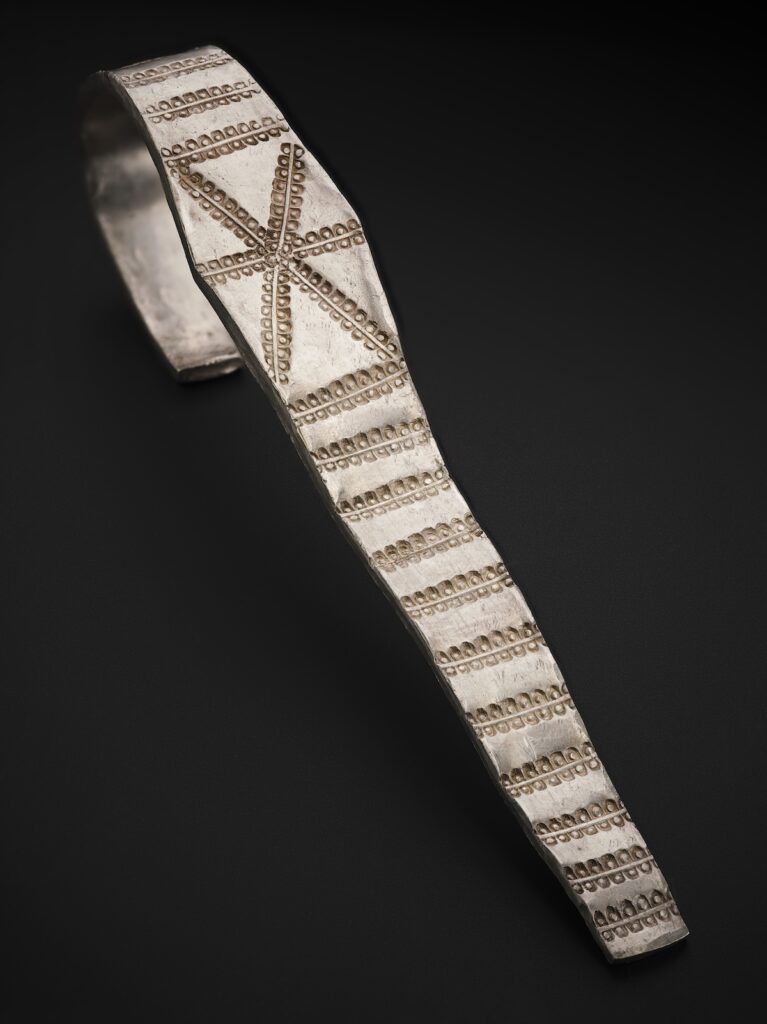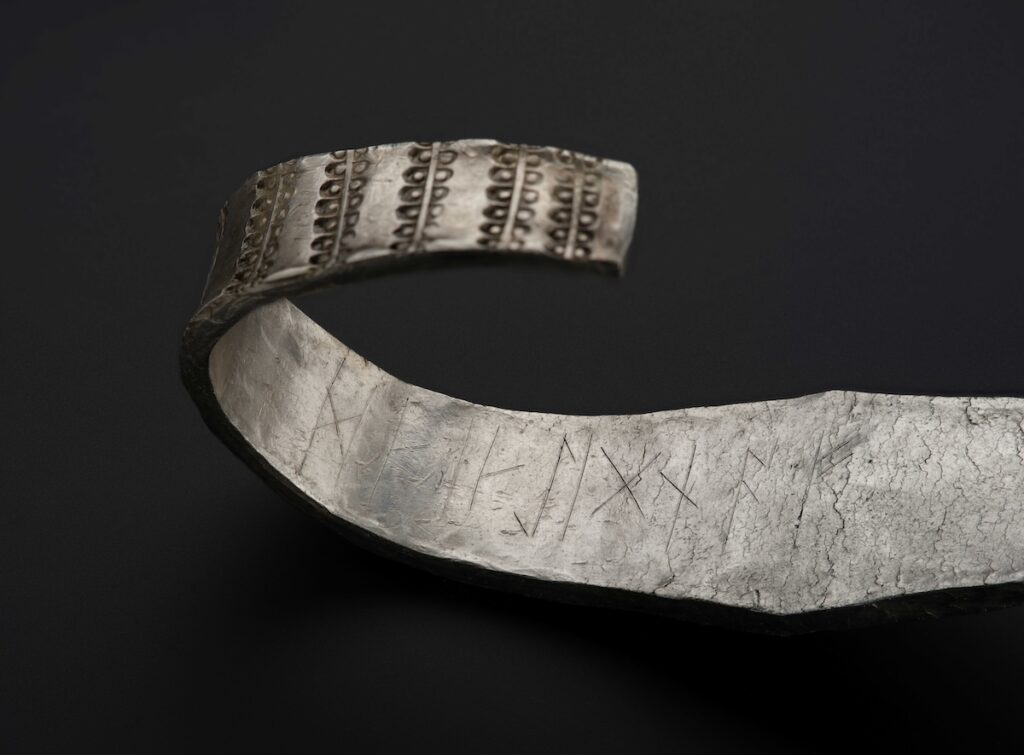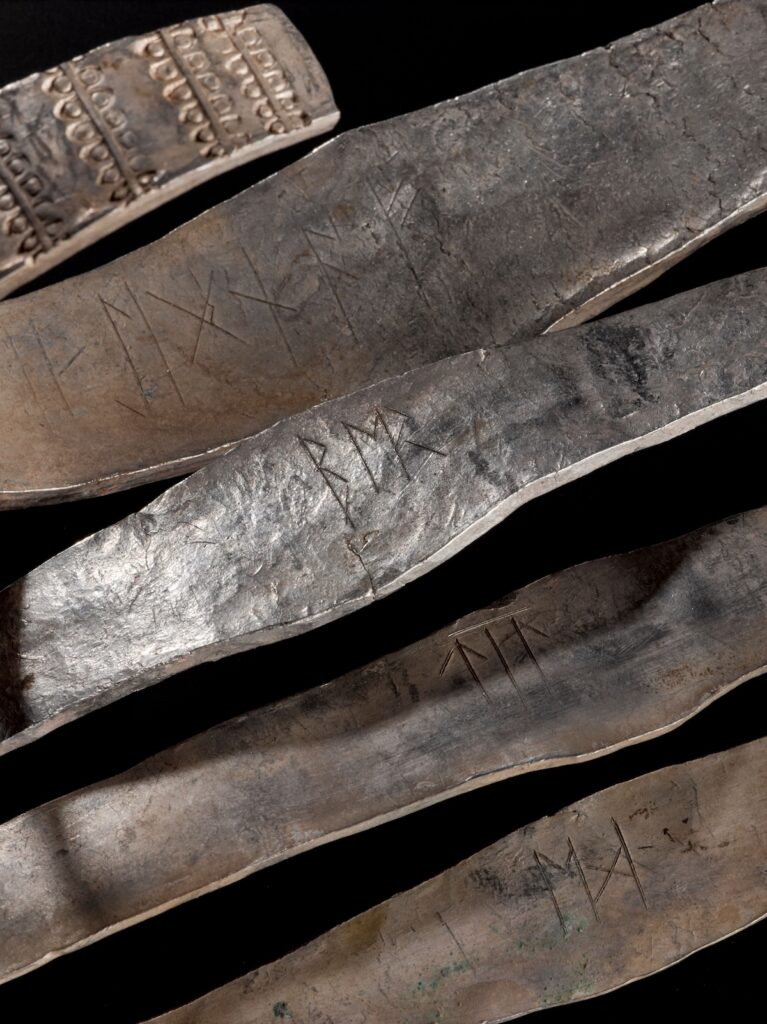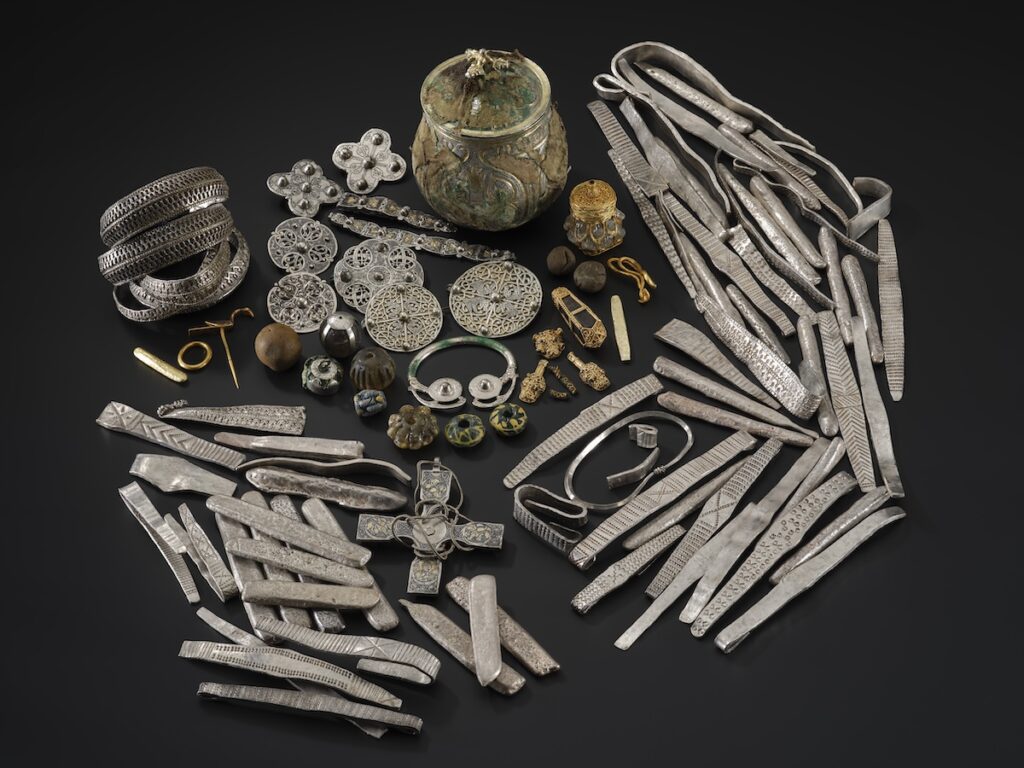Decoding hoard’s owners
It has been suggested that a hoard of Viking-age treasure buried in Scotland more than 1,000 years ago may have been owned by a religious community – thanks to the discovery of an ancient spelling mistake.
Researchers have been trying to decipher who once owned the Galloway Hoard since it was discovered in a field near Kirkcudbright by a metal detectorist in 2014.
Anglo-Saxon runes on three arm-rings suggested they belonged to different individuals, but a fourth had remained undeciphered as there was no recognisable direct translation, leaving experts “confounded”.
Now, a team at National Museums Scotland (NMS) in Edinburgh has suggested confusion over the runic inscription “DIS IS ЇIGNA ˑFˑ” on the inside of the ancient accessory may have been caused by spelling errors and variations of ancient pronunciation.
While the word “ЇIGNAF” does not correspond to any language spoken in early medieval Britain or Ireland, the discovery that the final “F” was marked out with dots to either side suggests it could be the name of the F-rune itself “feoh”, meaning wealth or property.
The word “ЇIGNA” could then be interpreted as the Old English word “higna” or community, with the first letter spelled in an unusual yet still comprehensible way.
The first word also seems “misspelled”, they believe, as it seems likely it represents the word “this”, possibly pronounced “dis” by its wearer.
As a result, the full inscription can be translated as “this is the community’s wealth/property”, with “higna” often used elsewhere in Anglo-Saxon documents to indicate a religious community.

Martin Goldberg, Principal Curator of Early Medieval and Viking Collections at NMS, said: “This is another really interesting and significant development in our understanding of the Galloway Hoard.
“The idea that the wealth this hoard represents would be communally held is fascinating. It does still leave us with unanswered questions around the circumstances in which a community’s wealth would come to be buried, and also which particular community.
“Some material within the hoard, such as the pectoral cross and the rock crystal jar made for a Bishop Hyguald, would support this being a religious community.”
Leading runologist Dr David Parsons, from the University of Wales, who has previously translated other runic inscriptions from the Galloway Hoard said: “This is a difficult and unusual inscription, and the proposed translation is challenging.
“There are a number of things which are technically ‘wrong’ when we compare it with what we know about ‘correct’ runic writing.
“However, if we think about both spoken and written English today, there are a huge range of regional and idiomatic variations and, if we allow for this, then it becomes possible to accept this as a plausible reading. And in the context of what (we) can deduce about the Galloway Hoard it becomes really quite compelling.”
The new finding comes at the conclusion of a three-year research project, “Unwrapping the Galloway Hoard”, led by NMS in partnership with the University of Glasgow.
It was announced ahead of the first leg of an international touring exhibition, Treasures of the Viking Age: The Galloway Hoard, which is currently on in Adelaide, Australia.
The exhibition shows how the Hoard was buried in four distinct parcels, with a top layer of silver bullion and a rare Anglo-Saxon cross, separated from a lower layer of three parts.
These comprised, firstly, another parcel of silver bullion wrapped in leather and twice as big as the one above and, secondly, a cluster of four elaborately decorated silver “ribbon” arm-rings bound together and concealing a small wooden box containing three items of gold.
Finally, a lidded, silver gilt vessel wrapped in layers of textile and packed with carefully wrapped objects including beads, pendants, brooches, bracelets, relics and other curios, often strung or wrapped with silk.
It was recently revealed that the origins of the vessel itself could be traced to the Sassanian Empire and indeed to a specific mine in modern-day Iran.
Buried around the end of the 9th century, the Galloway Hoard is the richest collection of rare and unique Viking-age objects ever found in Britain or Ireland.
It was acquired by NMS in 2017 with the support of the National Heritage Memorial Fund, Art Fund, and the Scottish Government, as well as a major public fundraising campaign.
Since then, it has been undergoing extensive conservation and research at the National Museums Collection Centre in Edinburgh.
Through careful conservation, painstaking cleaning, and cutting-edge research, a team of experts has revealed decorations, inscriptions, and other details hidden for over a thousand years.
Many of the objects have been found to be types never seen before in Britain and Ireland. Some had travelled thousands of miles to reach Scotland.
Further venues for the international tour will be announced, as well as plans for the hoard’s future display after the tour’s conclusion, including in Kirkcudbright.
https://www.nms.ac.uk/discover-catalogue/a-runic-revelation-who-owned-the-galloway-hoard


